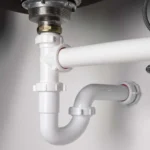When you’re considering purchasing a home, a home inspection is a vital step in the process. It helps identify hidden issues that could impact the home’s value or require expensive repairs down the road. During an inspection, certain red flags are more concerning because they could point to significant problems that are not only costly to fix but could also indicate structural or safety hazards. Here’s a look at five major red flags home inspectors commonly identify and why they matter.
1. Uneven or Sloping Floors
A common red flag that inspectors look for is uneven floors. While some minor settling of the foundation can be expected in older homes, pronounced sloping or sagging floors can indicate more severe issues. These uneven floors are often a sign of problems with the base, which may not be obvious at first but can have big effects.
Why it’s a red flag: Floors that slope or have noticeable dips may suggest that the house has foundation issues, such as shifting, settling, or cracking. Foundation repair can be incredibly expensive, often running into the thousands of dollars. As one of the Top 5 most expensive home inspection problems, foundation issues may require structural interventions to ensure the house remains stable and secure.
2. Clogged or Faulty Gutters
Gutters are crucial for channeling rainwater away from the foundation and preventing water damage. During an inspection, the inspector will look at the gutters to make sure they are working properly. They will look for signs of clogging, imbalance, or separation. If the gutters aren’t put up right or are broken, water can pool around the foundation or leak into the roof.
Why it’s a red flag: Clogged or faulty gutters can lead to water damage, including mold growth, wood rot, and foundation issues. The longer the problem is ignored, the more expensive the repairs can become, particularly when it leads to structural damage or requires replacing parts of the roof. If not addressed promptly, gutter issues can lead to the kind of water damage that’s difficult and costly to repair.
3. Signs of Pest Infestation
Pests like termites, rodents, and other insects can cause significant damage to a home’s structure. Inspectors look for signs of infestations, such as droppings, chew marks, or even the presence of pests themselves. In the case of termites, inspectors may check for hollowed-out wood or evidence of tunneling.
Why it’s a red flag: It is possible for pests, like termites or carpenter ants, to do a lot of damage to the frame of a house. Termite damage, in particular, can affect the wooden framework, leading to costly repairs. Depending on the extent of the damage, the cost of pest removal and repairs can run into the thousands, making it an expensive issue to tackle.
4. Poor Ventilation and Mold Growth
Ventilation plays a crucial role in keeping moisture levels in a home regulated. The inspector will make sure that attics, basements, and crawl areas have enough airflow during the inspection. If you don’t have enough airflow, the humidity can rise, which helps mold and mildew grow. Mold not only makes the air inside less healthy, but it can also damage buildings if it gets into the walls or wood.
Why it’s a red flag: Mold removal and the necessary repairs are costly and time-consuming. A mold problem may go beyond cleaning surfaces—it could require removing drywall, insulation, or even replacing sections of flooring. If left unchecked, mold growth can become a health hazard, which adds additional costs for remediation. Mold issues can easily become one of the top 5 most expensive home inspection problems, depending on the extent of the damage.
5. Outdated or Faulty Wiring
Inspecting the electrical system is one of the most important aspects of a home inspection. Home inspectors will look for signs of faulty wiring, such as exposed wires, outdated electrical panels, or any potential safety hazards like improper grounding. Older homes often have wiring that doesn’t meet modern standards, and this can create serious risks, including electrical fires.
Why it’s a red flag: Electrical systems that don’t work right can be very dangerous and cost a lot to fix. To bring an old electrical system up to date, you may need to rewire the house, replace old electrical panels, and possibly improve outlets and switches. It could cost a few thousand dollars to tens of thousands of dollars or more to fix these things, depending on how much electrical work needs to be done.
Conclusion
During a home inspection, the inspector is looking for signs of potential issues that could affect your safety, comfort, and financial investment. The five red flags mentioned—uneven floors, clogged gutters, pest infestations, poor ventilation with mold, and faulty wiring—are some of the most significant and costly problems home inspectors encounter. If you’re aware of these red flags, you can better assess the potential for expensive repairs or safety hazards, helping you make an informed decision about the property. Taking care of these issues early on ensures a safer and more reliable home for you and your family.









